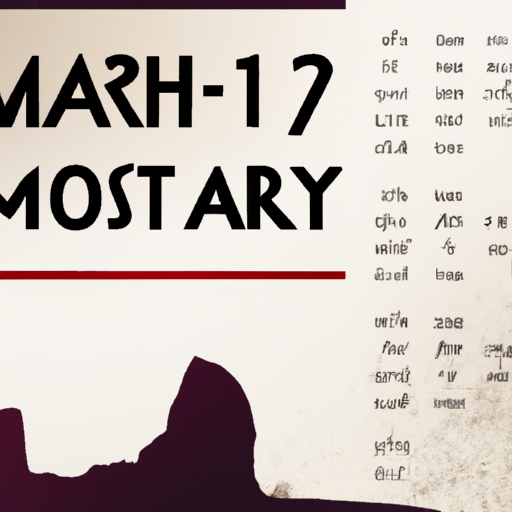A Look at the History Behind Why Korea Split from Japan
What mysterious forces could have been at play to cause such a momentous event? What impact did it have on the two countries and their futures? Delve deep into the past to unravel the story of Korea’s separation from Japan and the far-reaching consequences that followed. Unearth the secrets behind this momentous occasion and explore its effects.

Mysterious forces seemed to be at work in 1945, when Korea and Japan were separated in a momentous event that altered the course of history for both nations. Before that, Japan had assumed control of Korea through military occupation and political unrest since 1910. For 35 years, the Korean people endured Japanese rule with harsh restrictions on their culture and language. But by 1945, World War II had weakened Japan’s hold over its colonies, allowing Korea to declare independence in August of that year.
This separation had drastic implications for both countries. Koreans were able to reclaim their cultural identity after decades of suppression under Japanese rule; however, it also caused economic disruption as trade ties between the two countries were severed. Furthermore, tensions between North and South Korea escalated due to ideological differences following Korean independence—culminating in a devastating war in 1950 which further divided the peninsula into two hostile states.
The separation between Korea and Japan set off a chain reaction of events that continue to shape modern-day relations between these two countries and beyond. Despite its tumultuous past, today Korea stands as an example of resilience and progress—a testament to its people’s strength and determination in spite of adversity.
.
Introduction

Throughout the ages, Korea has gone through times of autonomy and dominion by foreign forces. After WWII, Japan had to give up its authority over the nation in 1945, which had been held since 1910. This gave rise to two distinct governments in 1948 – the Republic of Korea in the south and the Democratic People’s Republic of Korea in the north. The Korean War, which started in 1950, further divided the two sides and established their own independent governments that still stand today. It is a history full of complexity and contradiction.
– History of Korean-Japanese Relations Before the Split
The past between Korea and Japan is a convoluted, tumultuous one. It began centuries ago when Japan invaded and annexed parts of the Korean peninsula, bringing with it its own language, religion, and customs. After World War II, Korea was separated into North and South along ideological lines. Both sides sought to form strong ties with Japan in order to fortify their respective positions in East Asia. In 1965, a treaty was signed that normalized diplomatic relations and enabled trade between the two countries as well as travel for business or pleasure.
In 1991, a South Korean delegation visited Tokyo to sign an agreement that provided economic aid to both countries. This was seen as a major step towards improving relations after decades of animosity due to Japanese colonization of Korea. Since then, cultural exchanges and joint economic projects have been undertaken in an attempt to strengthen their relationship; however, tensions still exist due to unresolved issues such as territorial disputes over islands located between South Korea and Japan. Despite this, both sides are committed to continuing dialogue in order to foster better understanding between them and construct more solid links for the future.
– Historical Causes of the Korean-Japanese Split
The rift between Korea and Japan has been a long, convoluted journey. It all began in the late 19th century when Japan started to extend its influence over Korea. This culminated in Japan’s annexation of Korea in 1910, signifying a total takeover of Korean sovereignty. For the next 35 years, Japan held an iron grip on Korea, imposing rigid laws and regulations that restricted autonomy. During this time, there was also a surge of Japanese immigrants into the country, further intensifying the tension between them.
World War II only added fuel to the fire as Japan utilized Korea as a resource for its war effort and occupied much of its land. Koreans were drafted into military service or sent to work in labor camps during this period which caused even more animosity between them. After World War II ended in 1945, South Korea became a democracy while North Korea became a communist state allied with China and Russia. This political divergence only exacerbated their differences and eventually led to their separation into two distinct nations today.
These various events have had a significant impact on the current relationship between these two countries and continue to affect it today.
– Impact of World War II on the Korean-Japanese Division
The effects of the second world war remain deeply entrenched in the Korean-Japanese divide. The war saw a dramatic shift in the region, with two distinct nations emerging and a legacy of tension between them. This period, known as the Japanese occupation of Korea (1910-1945), saw Japan attempting to impose its own culture and language on Koreans, whilst exploiting their resources for its own gain – leading to a surge in animosity among those affected.
The end of World War II brought about a momentous change in Korean-Japanese relations. Upon Japan’s surrender in August 1945, Korea was liberated and allowed to establish an independent government – spurring a new wave of Korean nationalism which sought to reclaim their identity and autonomy from foreign powers. Simultaneously, however, it also sowed distrust between both countries which still continues today.
The division between Korea and Japan was further solidified by the establishment of two separate governments in 1948: North Korea under communist rule and South Korea under U.S.-backed democratic rule. This split families apart and curtailed economic ties between them for decades to come; exacerbating tensions as both sides accused each other of aggression or interference in their internal affairs.
To this day, the repercussions of World War II are still felt strongly within Korean-Japanese relations. Though attempts at reconciliation have been made over time – such as South Korea’s “Sunshine Policy” towards North Korea – mistrust remains pervasive, yet to be fully overcome.
– Role of International Powers in Korea’s Division from Japan
A momentous event in the modern geopolitical sphere, the ending of Japanese occupation of Korea in 1945 saw the U.S., Soviet Union, and China engage in talks that would ultimately lead to a divided peninsula. This partitioning of Korea into two states, North and South, was met with resistance from many desiring a unified nation; yet, international powers continued to intervene in order to protect their interests. Inevitably this led to the outbreak of war between North and South Korea in 1950, with foreign nations providing aid to both sides. To this day, international entities remain involved in negotiations regarding peace on the Korean Peninsula and reunification efforts. It is clear that these countries have had an indelible impact on forming today’s Korean history and politics since 1945.
– Long-Term Consequences of Korea’s Separation from Japan
The effects of Korea’s split from Japan are still being felt today, with ramifications that have been deeply embedded in the history of Japanese colonialism in Korea. From 1910 to 1945, Japan annexed Korea and implemented a policy of assimilation, resulting in attempts to erase Korean culture and language. This division has had a lasting impact on the two countries’ relationship, particularly in terms of economics and politics.
The economic disparity between the two nations is stark; while Japan was able to quickly recover from World War II due to US aid and its own resources, Korea remained impoverished for decades following the war due to its lack of resources and infrastructure. This imbalance has led to an unequal power dynamic between the two countries, with Japan often having more influence over Korean affairs than vice versa.
In addition, political instability has been a prominent issue in both countries since 1945. In South Korea, pro-Japanese forces have long clashed with those opposed to Japanese rule; meanwhile in North Korea, anti-Japanese sentiment is used by the regime as a tool for legitimizing its rule and controlling citizens. These tensions remain high despite recent efforts at reconciliation.
Finally, there is also a cultural aspect to consider: the legacy of Japanese colonialism has resulted in a strong sense of national identity among Koreans that is often characterized by anti-Japanese sentiment. This can be seen through popular culture such as films and music that contain references to historical grievances against Japan or portray Koreans as victims of foreign aggression.
Korea’s separation from Japan continues to be felt today through its economic, political, and cultural implications – all issues that will take time before they are fully resolved or forgotten entirely.
conclusion

A convoluted and tumultuous saga, the history of Korea and Japan’s relationship is one that has spanned centuries. After a lengthy period of subjugation to foreign rule, Korea was eventually annexed by Japan in 1910. This was followed by a period of Japanese colonial rule that lasted until 1945. During this time, Koreans were forced to endure oppressive policies and practices, including compulsory labor and cultural assimilation. In response to these injustices, a revolt against the Japanese authorities occurred in 1919, ultimately leading to the liberation of Korea at the conclusion of World War II. This was then followed by the Korean War which further divided the two countries into two separate governments with disparate ideologies that still exist today.
.
Some questions with answers
Q1: How did Korea come under Japanese rule?
A1: In 1910, Japan annexed Korea and placed it under its direct control.
Q2: How long was Korea under Japanese rule?
A2: Korea remained under Japanese rule until 1945 when Japan surrendered to Allied forces at the end of World War II.
Q3: Why did Japan annex Korea?
A3: Japan wanted to expand its empire and gain access to resources in the Korean peninsula.
Q4: What happened after World War II ended?
A4: After World War II, the United States and the Soviet Union divided Korea into two separate countries along the 38th parallel.
Q5: Was there any resistance from Koreans against Japanese rule?
A5: Yes, there was strong resistance from Koreans against Japanese rule during this period. Many Korean nationalists fought for independence from Japan and were successful in achieving it in 1945.





